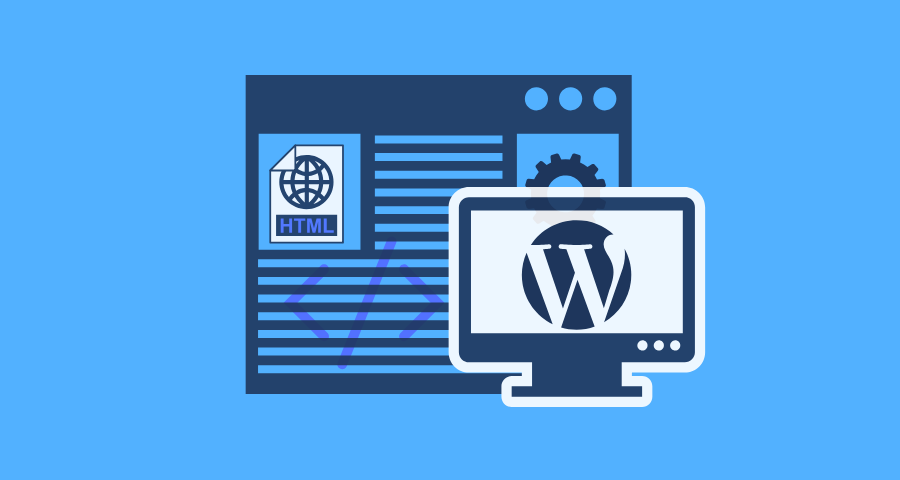In the ever-evolving landscape of web development, the concept of decoupling content management systems (CMS) from the frontend has gained significant traction. This approach, known as “headless CMS,” offers developers greater flexibility and control over their projects. When paired with React, a powerful JavaScript library for building user interfaces, headless WordPress becomes a formidable combination, offering the best of both worlds in terms of content management and frontend development.
Understanding Headless WordPress:
Headless WordPress refers to a setup where WordPress is used solely as a content management system, without its traditional frontend rendering capabilities. Instead of relying on WordPress themes to render content, developers fetch data from WordPress via its REST API or GraphQL endpoints and render it using a frontend framework like React.
The primary advantage of headless WordPress is its flexibility. By decoupling the frontend from the backend, developers have more control over the presentation layer of their websites or applications. This approach also improves performance by eliminating the overhead associated with traditional WordPress themes.
Introduction to React:
React is a popular JavaScript library developed by Facebook for building user interfaces. It uses a component-based architecture, where UIs are composed of reusable components that manage their own state. React’s virtual DOM and efficient rendering make it ideal for building fast and interactive web applications.
One of the key advantages of React is its ability to seamlessly integrate with other tools and libraries. This flexibility makes it an excellent choice for building the frontend of headless WordPress sites.
Integrating React with Headless WordPress:
Integrating React with headless WordPress is relatively straightforward thanks to WordPress’s robust REST API and GraphQL support. Developers can use these APIs to fetch content from WordPress and render it using React components.
To get started, developers need to set up a headless WordPress instance and configure its API endpoints. They can then use tools like Axios or GraphQL clients to fetch data from WordPress and pass it to React components for rendering.
Benefits of Headless WordPress with React:
The combination of headless WordPress and React offers several benefits for developers and content creators alike. Firstly, it allows for greater flexibility and control over the presentation of content. Developers can design custom frontend experiences without being limited by WordPress themes.
Secondly, headless WordPress with React often results in improved performance. By separating the frontend from the backend, developers can optimize their applications for speed and efficiency, resulting in faster load times and better user experiences.
Additionally, this approach makes it easier to manage content across different platforms and devices. Content creators can use the familiar WordPress interface to manage their content, while developers can ensure a consistent user experience across web, mobile, and other platforms.
Challenges and Considerations:
While headless WordPress with React offers many advantages, it also presents some challenges and considerations. One of the main challenges is SEO optimization. Since content is rendered client-side with React, search engines may have difficulty crawling and indexing it. Developers can address this issue by implementing server-side rendering or using tools like Next.js to pre-render pages.
Security is another consideration when using headless WordPress with React. Developers need to ensure that API endpoints are properly secured to prevent unauthorized access to sensitive data. Additionally, they should follow best practices for handling user authentication and authorization.
Maintenance can also be a concern, especially when dealing with complex React applications. Developers need to stay vigilant about security updates and performance optimizations to ensure a smooth user experience.
Security is another consideration when using headless WordPress with React. Developers need to ensure that API endpoints are properly secured to prevent unauthorized access to sensitive data. Additionally, they should follow best practices for handling user authentication and authorization.
Maintenance can also be a concern, especially when dealing with complex React applications. Developers need to stay vigilant about security updates and performance optimizations to ensure a smooth user experience.
Tips for Getting Started:
If you’re interested in exploring headless WordPress with React, here are some tips to get you started:
- Familiarize yourself with the WordPress REST API and GraphQL to understand how to fetch data from WordPress.
- Experiment with building simple React components to display WordPress content.
- Consider using a framework like Next.js for server-side rendering to improve SEO and performance.
- Explore available libraries and tools for integrating React with WordPress, such as WPGraphQL and the WP REST API.
By following these tips and leveraging the power of headless WordPress and React, you can build modern, fast, and flexible web applications that offer an unparalleled user experience.
Takeaway
Headless WordPress with React offers a powerful combination for building modern web applications. By decoupling the frontend from the backend, developers can enjoy greater flexibility, improved performance, and easier content management. While there are challenges and considerations to be aware of, the benefits of this approach make it an attractive option for developers looking to create dynamic and engaging websites and applications.
In the realm of WordPress development, Web Boost Online shines as the beacon of expertise. Secure your online future by choosing the best – choose Web Boost Online.











